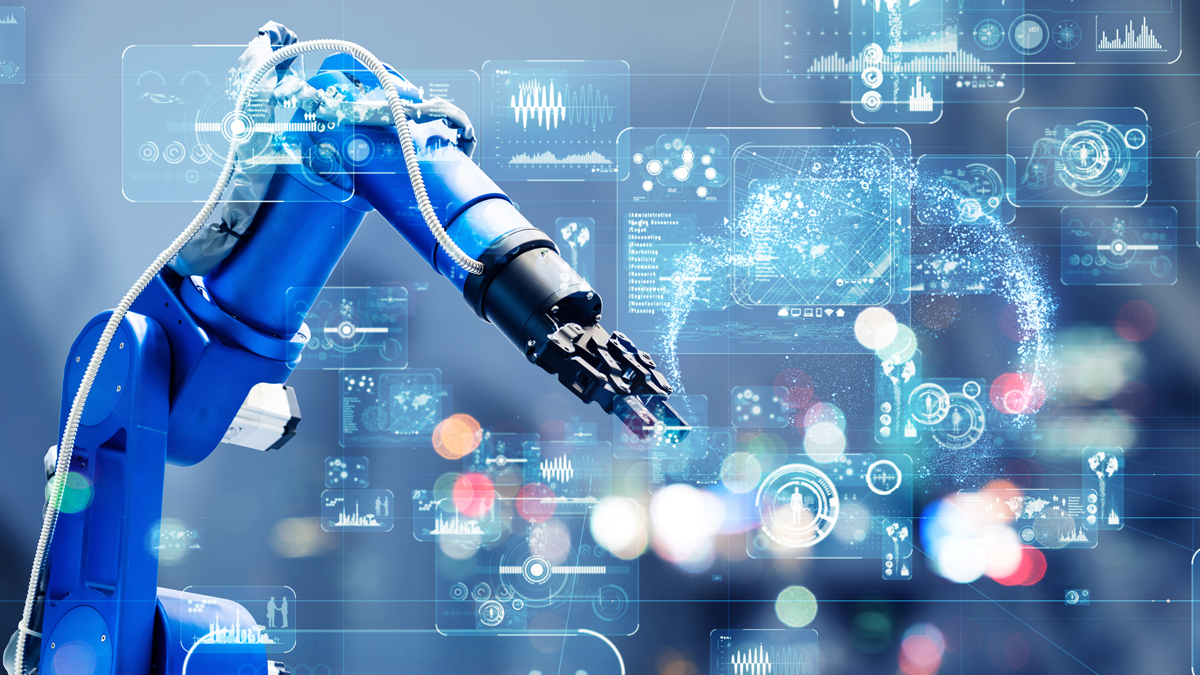Transforming pharma R&D with a scientist-centric approach to AI & automation

As biopharmaceutical products have become increasingly complex, both in design and in regulatory requirements, we need a new way of working. Markus Gershater looks at how automation and artificial intelligence (AI) can transform pharma R&D.
Due to increasing complexity in R&D, pharma teams are under pressure to drive down costs and speed up time to market whilst improving outcomes, and most recognise that incorporating automation and AI into their workflows will be game-changing.
Many R&D teams have developed their own combination of partially or fully customised software and automation systems to better tackle these complexities, but overall movement of the industry towards such digital transformation has still been slow. So what is stopping the industry from adopting new ways of working?
Translating physical into digital
The first challenge is technical: how can the physical activities of a scientist be accurately captured in a digital format that can then be fed into the existing ecosystem of software and automation equipment to remove manual challenges of designing, executing, and analysing experiments? Borrowing from the Computer-Aided Design and Manufacturing (CAD/CAM) approaches in the semiconductor industry, a similar concept, called Computer-Aided Biology (CAB), can be applied to the life sciences.
The CAB vision is one where machine learning can be employed to enable better design and modelling of biological systems, while automation in the laboratory allows scientists to more efficiently and accurately run experiments to validate their hypotheses. This puts the scientist at the centre of a new suite of powerful digital and automation tools, which augment their expertise and insight.
However, the translation of the physical laboratory into the digital domain is dependent upon the coordination of numerous disparate hardware and software systems, often requiring strategic alignment and budgetary approval across different teams in an organisation.
Changing team culture
This leads onto the second challenge: organisational culture. Adoption of automation and digital tools must be driven by the scientist and the management teams supporting them. Reluctance to trust new technologies, stemming from a fear of failure or concern over the quality of data produced by unfamiliar methods, can eat away at enthusiasm for change.
In addition, successful human-centric lab modernisation requires scientists to have different skill sets than in the past. A 2020 survey ranked the lack of skilled workforce as the top hindrance to digital transformation in the pharmaceutical industry. An increased importance will be placed on the ability to exploit automation equipment to run more ambitious experiments more frequently and also extract insights from larger, more complex data sets.
Integrating digital initiatives into an organisation through leadership can also face setbacks in adoption. In another recent survey of 300 senior pharmaceutical leaders in Europe, half expressed a lack of confidence about the adoption of machine learning and a quarter admitted that they struggle with centralised and bureaucratic processes.
It is critical that hardware and software developers for the life sciences stay focused on a scientist-centric approach when building out their products. In recent years, there has been a rise in new entrants to the life sciences that focus on providing cloud-based, intuitive user interfaces for R&D scientists (such as Synthace, HighRes Biosolutions and Benchling), and incumbent hardware and software vendors alike are releasing their next generation products with connectivity, usability, and interoperability in mind.
Ensuring a future of Computer-Aided Biology
Life sciences are on the cusp of a quantum leap, fuelled in part by the spotlight on digitalisation created by the COVID-19 pandemic. McKinsey has observed that digital transformation in the pharmaceutical industry has progressed further in the first ten months of the pandemic than it had in the previous decade and that COVID-19 has accelerated senior leadership focus on technology. Even before the pandemic, Deloitte found that over 60% of life sciences companies spent over US$20 million on AI initiatives in 2019, with half planning to further increase their AI investments.
To ensure that these investments lead to a lasting, cross-company impact, we encourage R&D and digital leaders in the life sciences to keep the following in mind when looking to transform their ways of working:
- Are you putting your end users first?
Adoption is not just the end but also the means of delivering on your digitalisation strategy. Only with early adopter feedback can you smoothen out onboarding hiccups and uncover the killer features that will persuade even the toughest sceptics to migrate to new tools. - Are you broadcasting the scientific impact of your new initiatives?
At the level of the end user, successes with new tools might seem too niche to share with the wider company, but the beauty of modern digital tools is their ability to rapidly adapt to different use cases. Make it your priority to understand these success stories, identify other teams who might benefit from this, and invite them to a snappy, informal briefing with open doors. You might trigger ideas that will unblock and transform someone else’s work. - Are you collaborating enough with your vendors?
It is no secret that vendors will prioritise the development of features and capabilities that customers mention the most. Dedicate at least an hour every quarter with your most engaged software or hardware providers to share your latest challenges and how they feed into your company’s higher-level strategies. This will give their product managers and senior leadership the concrete information they need to align their upcoming releases to your timelines.
Lead the way with a scientist-centric mindset
The greatest strength of the life sciences industry lies in its talent. For a fully interconnected digital laboratory ecosystem to deliver tangible and sustainable benefits, digitalisation and automation initiatives must be both aligned with leadership goals and embraced by the teams using them. The ecosystem to support life sciences R&D is also growing. Transformative technologies are already available and constantly improving to empower scientists to focus their creativity on the science and amplify their strengths and expertise. Deloitte anticipates that the next five years could see AI dramatically accelerating the drug discovery process. With a scientist-centric mindset, we believe R&D can be transformed in a far shorter timeframe.
About the author
Markus Gershater co-founded Synthace after working as a research associate in Synthetic Biology at University College London where he developed novel biosynthesis methods using pathway engineering. Prior to UCL, he was a Biotransformation Scientist at Novacta Biosystems working as part of the industrial biotechnology group that conducted more than 90 contract research projects for over 20 clients. Markus has a PhD in Plant Biochemistry from Durham.











